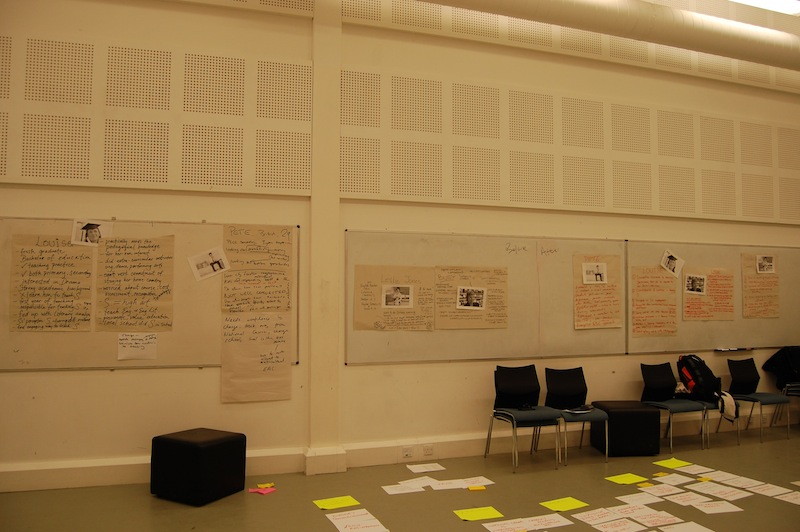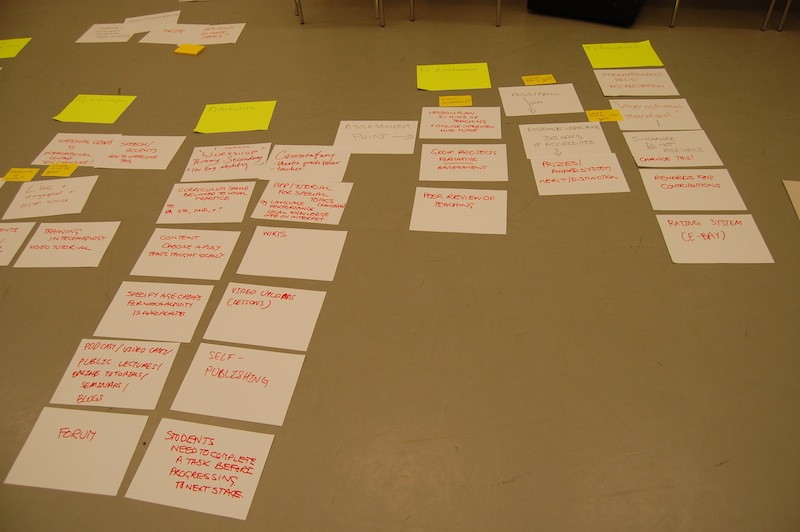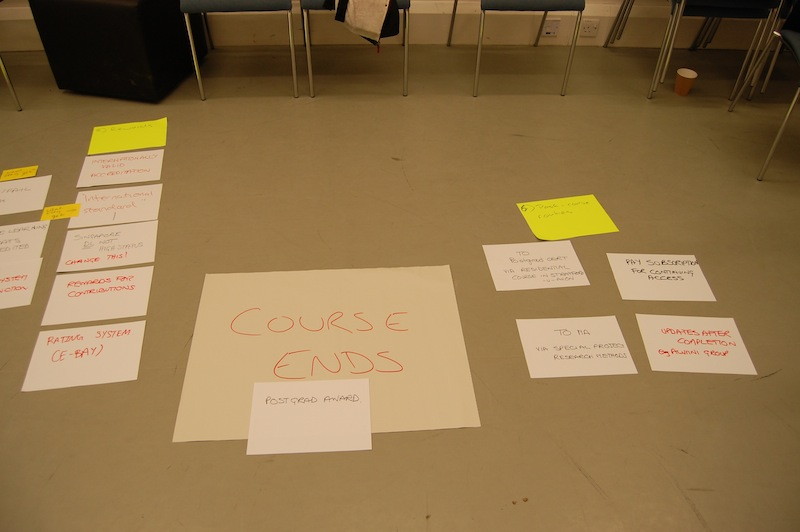Last night I did an introductory film making session for a group of (about a dozen) student advisors from the Learning Grid at Warwick. The Grid Advisors are all current students (with the exception of a specialist communications advisor). They work shifts in the Learning Grid, an open-access technology enhanced library and collaborative learning space for students1. They are all technologically capable, but also have training and experience in supporting the academic work of other students (the main purpose of the team). As part of the recruitment process, each student made a short film using a variety of tools and techniques. They already have strong technical skills, the aim of the session was to hone and extend their creativity. The eventual output will be a series of films (created in groups of two or three), demonstrating the work of the advisors (in a creative and interesting way), to be shown at a showcasing event in March.
I had four objectives for the session:
1. Convincing the students that there is sufficient support and facilities available to complete their film project (they will be able to use the cameras that are available from the IATL Media Suite).
2. Show them how they can (and must) analyse the feasibility of a proposed film. I played a series of films from the Media Suite show reel, demonstrating a variety of techniques and film making tricks. The complexity, required skills and required amount of work for each was explained. I also made them aware of the skill of spotting the small details that can make a big difference - for example, techniques that can alleviate or avoid the problem of getting good quality sound.
3. I introduced the basic technique of storyboarding in Powerpoint (or Keynote). I recommended that they construct their film as a storyboard built from a series of slides, with each slide representing a sequence (or sometimes with more granularity a shot) in the movie. The slides might initially contain lots of text information, outling what the scene will achieve. The text then gets progressively replaced by or shifted into scripts and images. This can be used as a lo-fi prototype2 for the film. Scripts can be written and rehearsed using the slideshow. The movie can be analysed for sound construction, creative effect and feasibility, and turned into a workable project (for example with a schedule). I recommended that they try to get on location, take representative still images, and add them to the slides in the storyboard. From having a good storyboard in Powerpoint, they could export this into iMovie or Screenflow and start replacing slides with editied footage and voice overs (they may even wish to keep some of the slides).
4. Finally, after a short break, we did a pitching and catching session. I began by (rather dramatically) pitching my own idea:
Warwick University, March 2011.
Desperate students with no one to turn to, no hope of salvation, no
way in which they can get their essays written.
They drink coffee, they read Facebook, they break down in tears.
Who can help? Enter the Grid Advisor sent from heaven (special effect
with grid advisor as angelic descending stairs).
Series of shots showing angel grid advisor helping students.
Shot of happy students handing in essays.
I then asked the students to for into small groups and come up with their own pitches. The framing of this task is essential. Following the findings of Kimberley Elsbach in her classic HBR article "How to Pitch a Brilliant Idea"3, I always advise pitchers to engage the catchers as collaborators in the creative process, to appear competent and with a strong idea and artistic vision, to give a well thought-out and understandable presentation, but also to welcome and value contributions from the audience (a combination of the best aspects of what Elsbach calls the "artist, showrunner and neophyte" stereotypes). The pitching session worked well, with the whole group supporting and contributing to each pitch after it was presented, but also suggesting issues that need to be thought through and problems to be solved. We finished with a feeling that some good movies will be produced.
This is all good fun, and perhaps developed the social-professional bonds within the Grid Advisor team further, but I also think it provides some very significant benefits to the capabilities of the advisors (as advisors and as students). The film making discipline (as described above, as well as further elements) provides an excellent and reliable framework in which we can manage risky, challenging and relatively unpredictable activities.4 Both storyboarding and pitching provide effective means for generating ideas, testing them, and reflecting upon the process. For example, during the presentation of the pitches (itself a highly entertaining activity), at several points participants questioned the seriousness and appropriateness of their responses to the brief. This was a matter of contention to which the whole group achieved a delicate consensus. The storyboards will go on to provide a tangible and testable point of reference in many ways (including the reality checks of feasibility, progress and individual commitment). This kind of tangible object for collaboration, contention and reflection is, I believe, the most valuable use to which we can put a learning technology.
In this particular case, there is a second level of benefit. Each of these students will advise many other students during their work at the Learning Grid. They will be able to cascade these skills and approaches. At two points during the session, I paused to encourage the advisors to reflect upon how these film making techniques may be of use in different creative activities, such as essay writing and seminar presentations. I referenced work that I have done with Nicoleta Cinpoes of Worcester University, using similar techniques to help English Department undergraduates to write and improve presentations (using a similar iterative Powerpoint storyboarding technique, but with the aim of creating a Powerpoint presentation). Hopefully, we will start to see these ideas spreading.
I will report further on the progress of the movie makers.
_____________________
1For a good overview of the Learning Grid approach to collaboration, see: Conaghan and Watts, "5 Steps to Great Collaboration", Knowledge Centre web site, http://www2.warwick.ac.uk/alumni/knowledge/themes/01/collaboration/ [accessed 16/01/2011]
2Kelley, David "Prototyping is the Shorthand of Design" in Design Management Journal, Vol 12, No. 3, Summer 2001.
3Elsbach, Kimberley "How to Pitch a Brilliant Idea" in Harvard Business Review, October 2003.
4Morley, E & Silver, A "A Film Director's Approach to Managing Creativity" in Harvard Business Review, March 1977.






 Robert O'Toole
Robert O'Toole

 Please wait - comments are loading
Please wait - comments are loading






